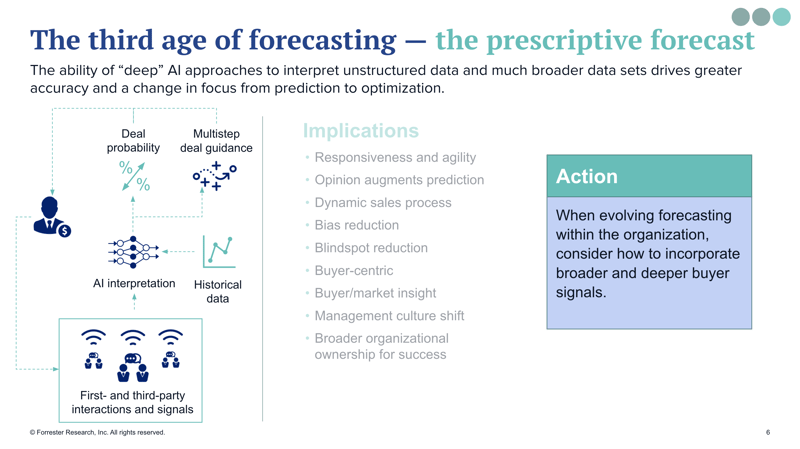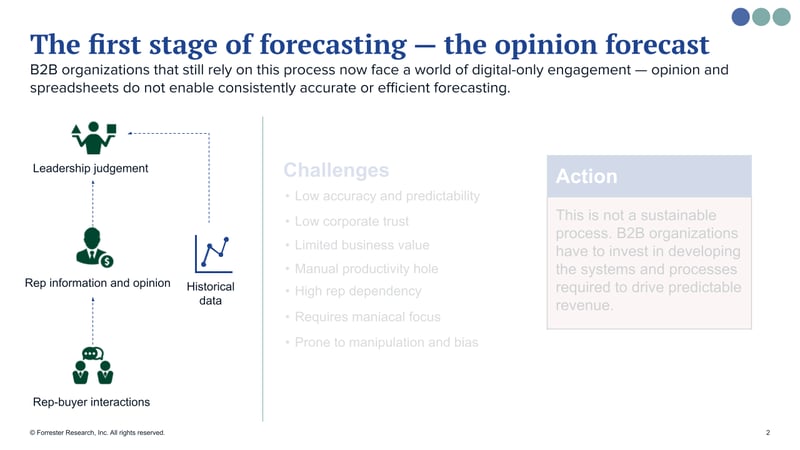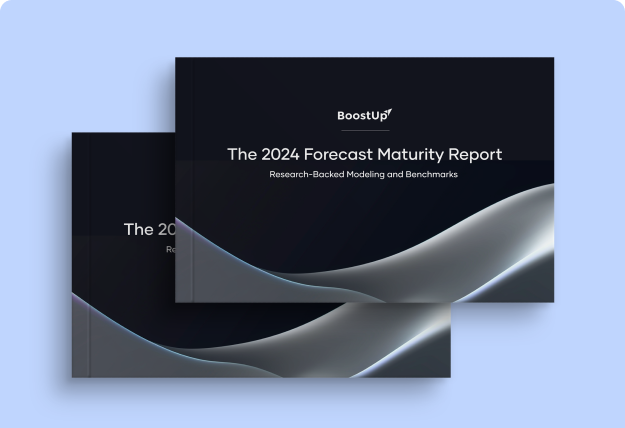The Revenue Blog /
Sales Forecasting in 2024: The Future of Forecasting
Sales Forecasting in 2024: The Future of Forecasting

Topics covered in this article
We’ve been talking about the future of sales forecasting for a while now, but it’s time to stop… Because the future is here.
In 2023, the platforms, data, processes, skills, and knowledge necessary for a prescriptive forecast are all readily available. Now, it’s table stakes.
What is a prescriptive forecast? Rather than a forecast focused on the prediction of outcomes, a prescriptive forecast optimizes outcomes.

Using massive unstructured data sets, automation, and AI, a prescriptive forecast allows sales teams to build evidence-based playbooks, spot issues within deals, and remedy problems to positively affect outcomes and generate more revenue.
The result is increased agility, buyer-centric processes, improved outcomes, and greater visibility.
So, as we are now in the future. It’s time to adapt andutilize AI for predictive forecasting.
AI For Predictive Forecasting
As Anthony McPartlin says, it’s time for organizations to upgrade. For 2023, his recommended action items are:
- Upgrade from the first age of forecasting.
- Shift to an opportunity-based approach.
- Develop sound sales forecasting fundamentals.
- Automatically capture buyer interactions today.
- Define and explain your forecasting philosophy.
The first age of forecasting is opinion based, with judgment calls made from historical data by sellers and sales managers.

There are calculations, but they are inaccurate, inefficient, and not very trustworthy. The calls made from this forecast are also not actionable or reactive in any way.
Overall, This is not a sustainable process. B2B organizations have to invest in developing the systems and processes required to drive predictable revenue.
In 2023, you should at least enter the second stage of forecasting, which utilizes AI and historical data to augment your capabilities.
The third stage is the aforementioned collection of unstructured data and the utilization of AI for predictive forecasting.
Matt Curl of Checkr concurs, stating that AI turns data into facts. Starting in Stage Two of forecasting It derives actual conclusions based on historical data, allowing you to optimize both your sales and forecasting processes.
He says that AI can improve:
-
Lead scoring and lead quality affect conversions
-
How you ‘work’ a lead with people/automation/etc.
-
Quality of AEs/SDRs and campaign quality
In a prescriptive forecast, AI provides the ability to break down your leads into the most important sources so you can make the best decisions about your pipeline.
When it comes to the benefits of AI forecasting, Christine Dorrian agrees. Saying that it helps with:
- Pipeline generation & coverage
- Expansion of the install base (up-sell/cross-sell)
- Protecting the book of business (renewals)
- Selling as a team (pre to post-sale)
- Accurate & predictable financial reporting and guidance
To see the full Forecasting 3.0 roundtable, click here.




-Photoroom.png)